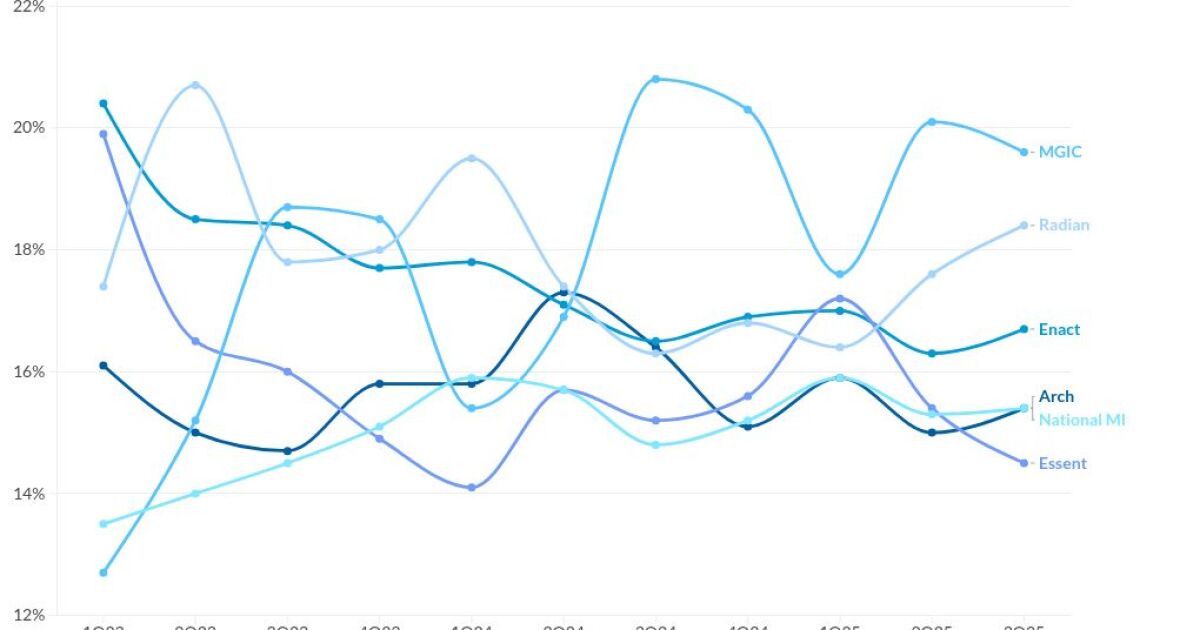
As home affordability decreased, sellers reduced asking prices more frequently this September, with the pace coming in above typical seasonal patterns.
Approximately 6.5% of homes on the market saw asking prices reduced during the four-week period ending Sept. 27, according to new research from Redfin. The rate corresponds to approximately one in 15 properties on the market and represents an increase from 5.8% a month earlier. That is a sharp rise from what has been reported in past years over the same time frame, the real estate brokerage said.
The uptick in price cuts comes as low inventory and rising interest rates take a bite out of affordability, according to several recent reports. Conditions contributing to the current state of the market appear set to continue leaving their mark on affordability over the next several months, leading analysts said at this week's Digital Mortgage conference in Las Vegas.
Redfin found the median sales price rose 3.1% year-over-year, coming in at $372,500, even with "relatively low" demand. A recent rise in the volume of new listings, also atypical for the time of year, is giving home shoppers more leverage.
"Buyers are using things like inspection negotiations and high insurance premiums to back out of deals," said Heather Kruayai, a Redfin agent in Jacksonville, Florida, in a press release. "They're holding a lot of the cards; today's sellers need to concede on some details to close the deal."
The latest affordability data from the Mortgage Bankers Association offers few signs of improvement for aspiring homeowners. In its monthly purchase-applications payment index released this week, the trade group reported the average monthly amount applied for by new home buyers increasing by a fraction to $2,170 in August, from $2,162 in both June and July. The current figure is higher by 18% compared to the mean level of a year ago — $1,839.
"Prospective homebuyers' budgets continue to be impacted by the combination of high home prices and mortgage rates that remain higher than 7%," said Edward Seiler, MBA's associate vice president, housing economics, and executive director, Research Institute for Housing America.
The latest PAPI report does not factor in September's surge in mortgage rates, with the 30-year conforming average landing at 7.41% at the end of last week among MBA members — the highest point since late 2000. Similarly, Freddie Mac reported a consistent rise in the 30-year rate throughout September after a pullback in August.
Within individual segments, borrowers of Federal Housing Administration-backed mortgages saw their average payment hit a record of $1,901, jumping 2.5% from $1,854 in July and 29.4% from $1,469 in August 2022.
But even with the overall PAPI increase, conventional-loan borrowers saw a fall in the mean to $2,187 from $2,197 between July and August. But the number was still well above $1,901 a year ago.
The MBA's national payments index for new purchase applications inched up 0.4% to a reading of 175.4 in August compared to 174.7 a month earlier. An increase in the number reflects declining affordability. Strong income earnings of over 4% over the past 12 months helped offset the steep climb upward in payment amounts.
The states showing the smallest degree of affordability were concentrated in the Western U.S., according to the MBA. Idaho led the country with a PAPI score of 269.6, followed by Nevada and Arizona at 265.7 and 238.6.



